Πως είναι μια ξαφνική εκκένωση μιας ολόκληρης περιοχής; Αφού όλοι έχουν φύγει, πως είναι οι περιοχές που έχουν εγκαταλειφθεί; Ο φωτογράφος του Associated Press David Guttenfelder βρέθηκε για λογαριασμό του National Geographic στην αποκλεισμένη ζώνη γύρω από το πυρηνικό εργοστάσιο της Φουκοσίμα. Η εκκένωση άρχισε λίγο μετά το μεγάλο σεισμό της 11 Μαρτίου 2011 και το τσουνάμι που οδήγησε σε μία από τις χειρότερες κρίσεις πυρηνικής διαρροής και πολλά έχουν παραμείνει ανέπαφα, από τα τρόφιμα στα ράφια των σούπερ μάρκετ μέχρι τις παιδικές τσάντες στις σχολικές αίθουσες. Είναι πιθανό η περιοχή να έχει την ίδια τύχη με αυτήν της πόλης Pripyat στην Ουκρανία 25 χρόνια μετά το ατύχημα στο Τσερνομπίλ.
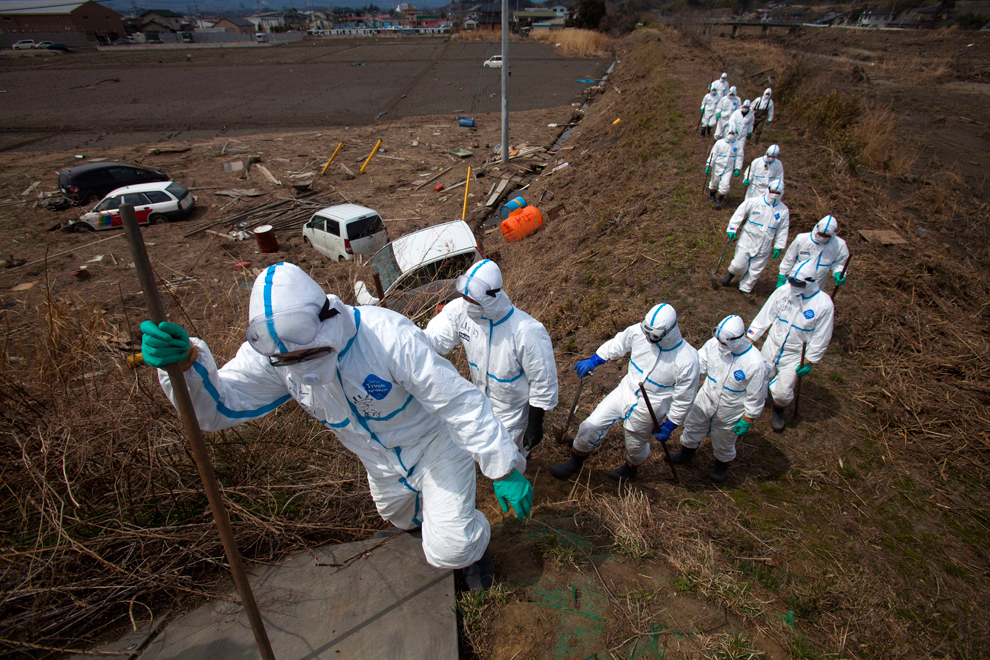
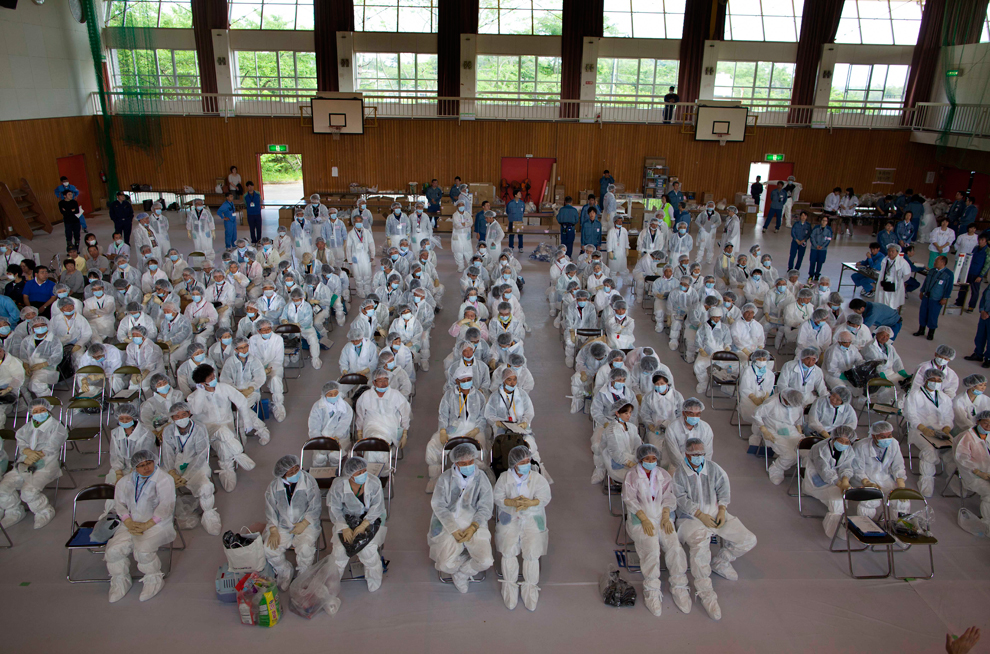
In this June 8, 2011 photo, residents wearing protective suits gather in a gym in Hirono, Japan for a briefing before being escorted to their homes inside the exclusion zone to retrieve a few small items. The government allowed strictly controlled visits by residents and each person had to be tightly screened for radioactive contamination upon return. (AP Photo/AP Photographer David Guttenfelder on assignment for National Geographic Magazine) #

In this July 24, 2011 photo, residents wearing protective suits inside a bus in Hirono, Japan wait to be escorted to their homes inside the exclusion zone for the first time since the March 11 tsunami to retrieve a few small personal items. (AP Photographer David Guttenfelder on assignment for National Geographic Magazine) #

In this June 8, 2011 photo, employees of the Tokyo Electric Power Co. (TEPCO) bow deeply as a bus passes by carrying people originally living in towns inside the exclusion zone near the damaged nuclear power plant which is operated by TEPCO. (AP Photographer David Guttenfelder on assignment for National Geographic Magazine) #
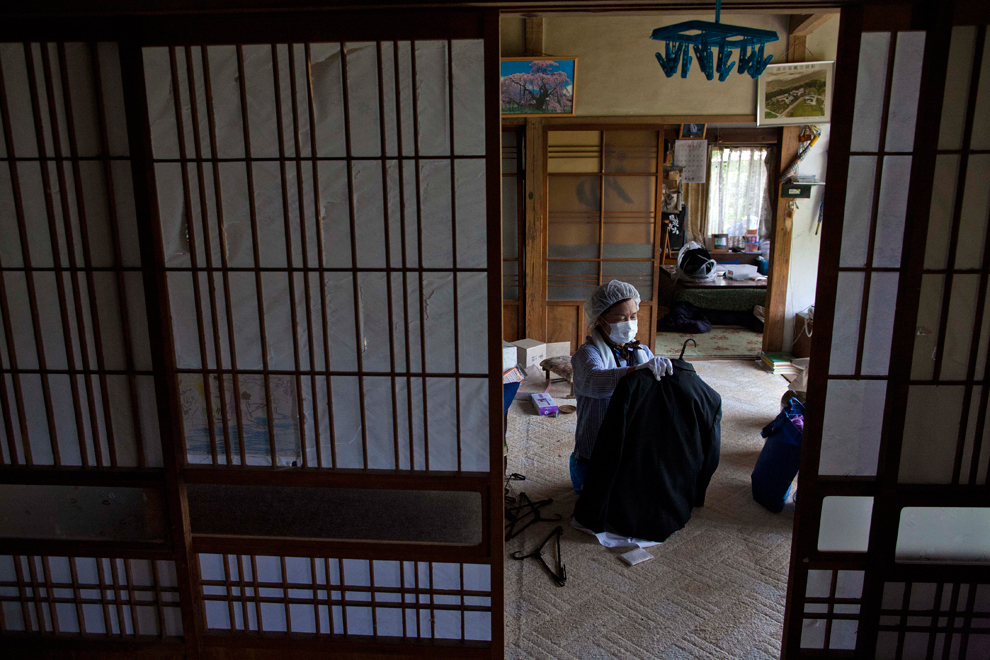
In this July 26, 2011 photo, Junko Shimizu packs her husband’s suit to take out of their evacuated home in Namie, Japan during a government organized visit inside the exclusion zone for families to collect a few of their belongings. The Shimizu family chose to take with them important documents, their best clothing, their daughter’s wedding kimono, and family photos, among other important small items. (AP Photographer David Guttenfelder on assignment for National Geographic) #

In this June 7, 2011 photo, residents of a nursing home in Itate, Japan rest in a community room. Itate is located northwest, and just outside of the official nuclear exclusion zone but registers some of the highest levels of radiation in the prefecture and was largely abandoned over the summer. Employees of the nursing home say that some residents of the nursing home elected to stay behind because they are old enough that they do not fear the long-term effects of exposure to radiation. Employees of the facility had mostly moved away but commute to work and rotate their shifts to limit their own exposure. (AP Photographer David Guttenfelder on assignment for National Geographic Magazine) #
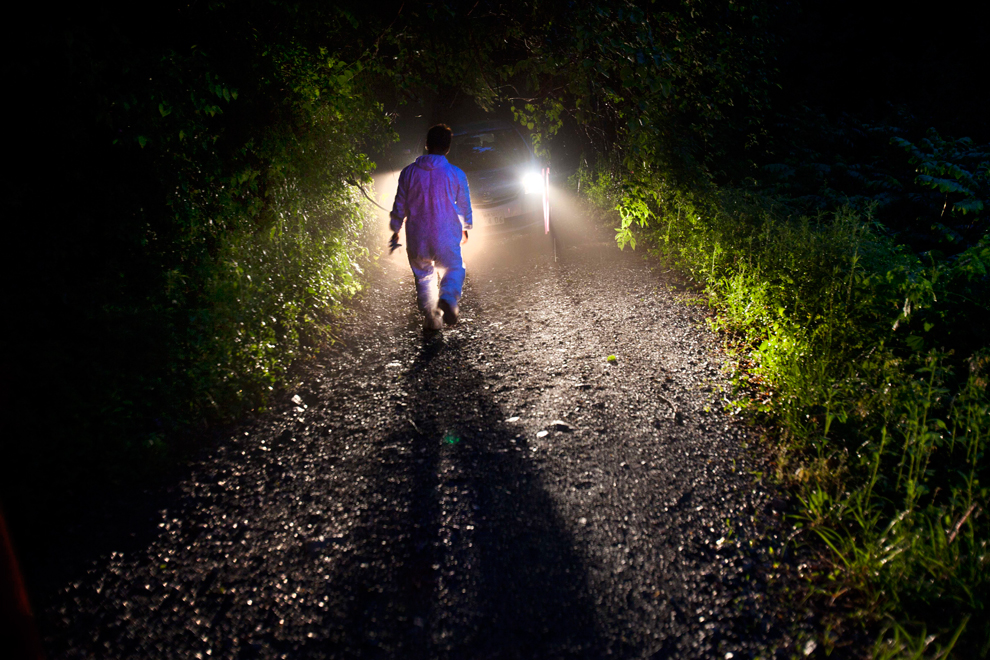
In this June 5, 2011 photo, an animal rights activist wearing a white suit to protect him from radiation, tries to guide a car through an overgrown mountain road near Naraha, Japan as he and his colleagues bypass police barricades to enter the nuclear exclusion zone so they can feed and rescue abandoned animals. (AP Photographer David Guttenfelder on assignment for National Geographic Magazine) #
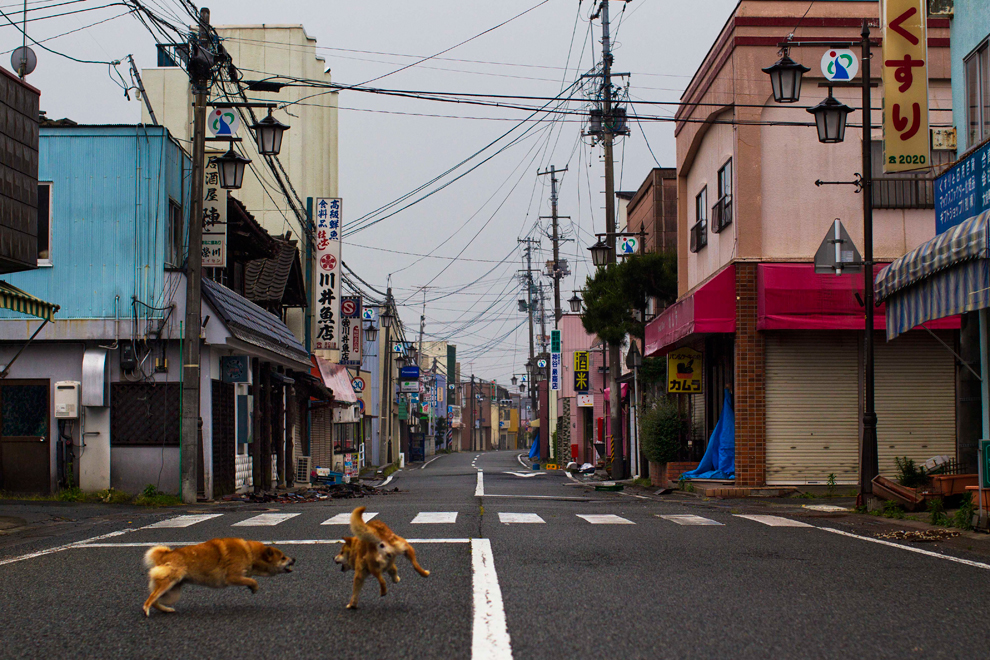
In this June 5, 2011 photo, two stray pet dogs fight in the deserted streets of Okuma, Japan. In the early days of the crisis, roaming farm animals and pets were everywhere inside the no-go zone. But by midsummer, some animals had been rescued and a number of others had perished of starvation and disease. (AP Photographer David Guttenfelder on assignment for National Geographic Magazine) #
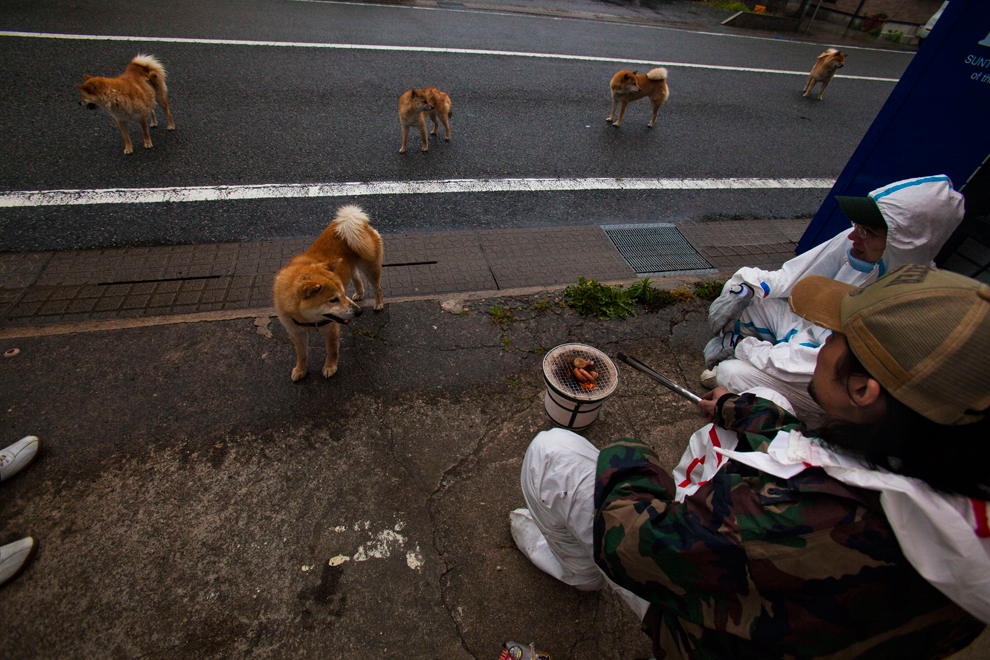
In this June 5, 2011 photo, Japanese animal rights activists Leo Hoshi (right) and Kei Asanuma grill meat to attract stray dogs as they try to rescue pets that evacuees from the nuclear exclusion zone left behind in the contaminated town of Okuma, Japan just three kilometers from the Fukushima Daiichi nuclear plant. (AP Photographer David Guttenfelder on assignment for National Geographic Magazine) #

In this June 18, 2011 photo, a farmer’s pig rests in a puddle on main street near the train station in central Namie, Japan less then six miles from the crippled nuclear reactor. Farmers across the area had to hastily leave their homes and were unable to evacuate livestock, or return to the irradiated zone to care for them. (AP Photographer David Guttenfelder on assignment for National Geographic Magazine) #
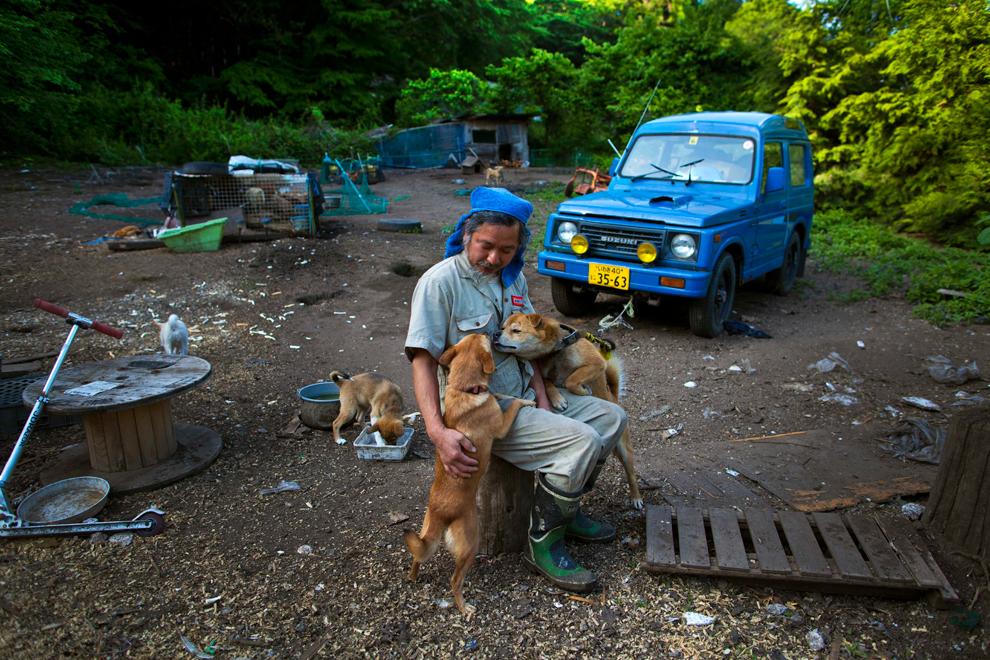
In this June 8, 2011 photo, Keigo Sakamoto holds two of his dogs in the front yard of his house. Sakamoto, a Japanese egg farmer, lives in Naraha on the 12-mile boundary line of the exclusion zone around the damaged nuclear power station. He is allowed to stay in his home but must bypass the police barricades and lost his livelihood when the neighbors and nearby towns were evacuated. (AP Photographer David Guttenfelder on assignment for National Geographic Magazine) #

In this July 22, 2011 photo, a woman shops for groceries despite the shelves being mostly empty during the final days of a gradual process of evacuation of the town of Itate, Japan. Itate is northwest, and just outside of the official nuclear exclusion zone, but registers some of the highest levels of radiation in the prefecture and was largely abandoned over the summer. (AP Photographer David Guttenfelder on assignment for National Geographic Magazine) #

In this July 26, 2011 photo, a member of the Namie, Japan school board checks the hands of a colleague as they measure radiation levels in a baseball and soccer field in their community inside the nuclear exclusion zone. (AP Photographer David Guttenfelder on assignment for National Geographic Magazine) #

In this June 9, 2011 photo, an evacuee lies down in her makeshift temporary home on the floor of the Big Palette convention center in Koriyama, Japan. Tens of thousands of people fled their homes surrounding the damaged nuclear power plant. (AP Photographer David Guttenfelder on assignment for National Geographic Magazine) #

In this June 9, 2011 photo, evacuee Nobuko Sanpei, 74, eats rice in her cardboard-box home on a hallway floor in a convention center in Koriyama, Japan. Sanpei, who has since moved to a small apartment, farmed rice with her husband in Tomioka, Japan less than six miles from the power station. (AP Photographer David Guttenfelder on assignment for National Geographic Magazine) #
Δείτε περισσότερες φωτογραφίες εδώ http://www.boston.com

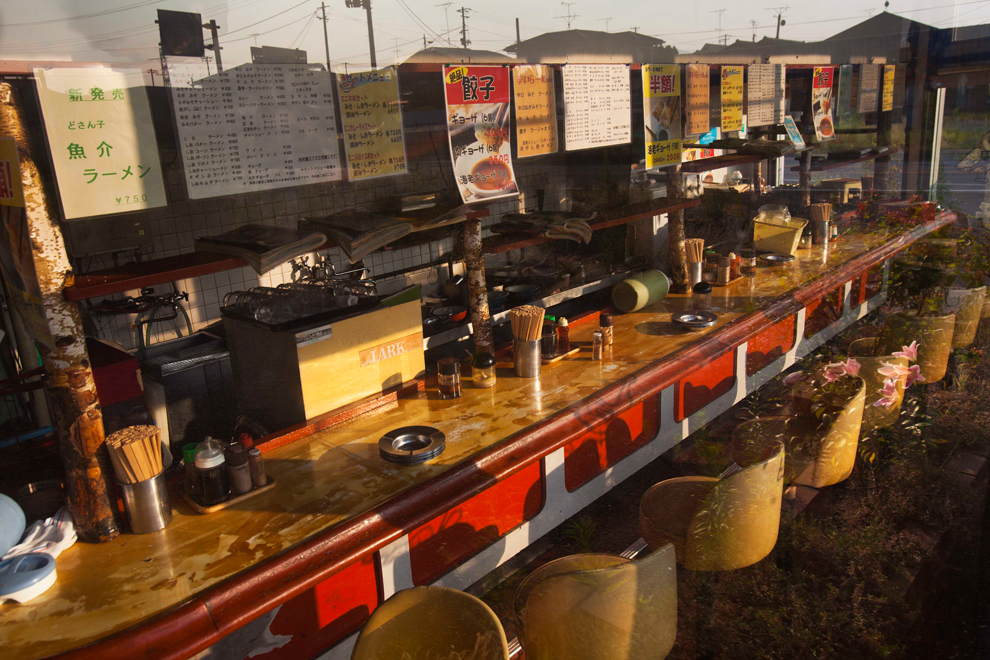

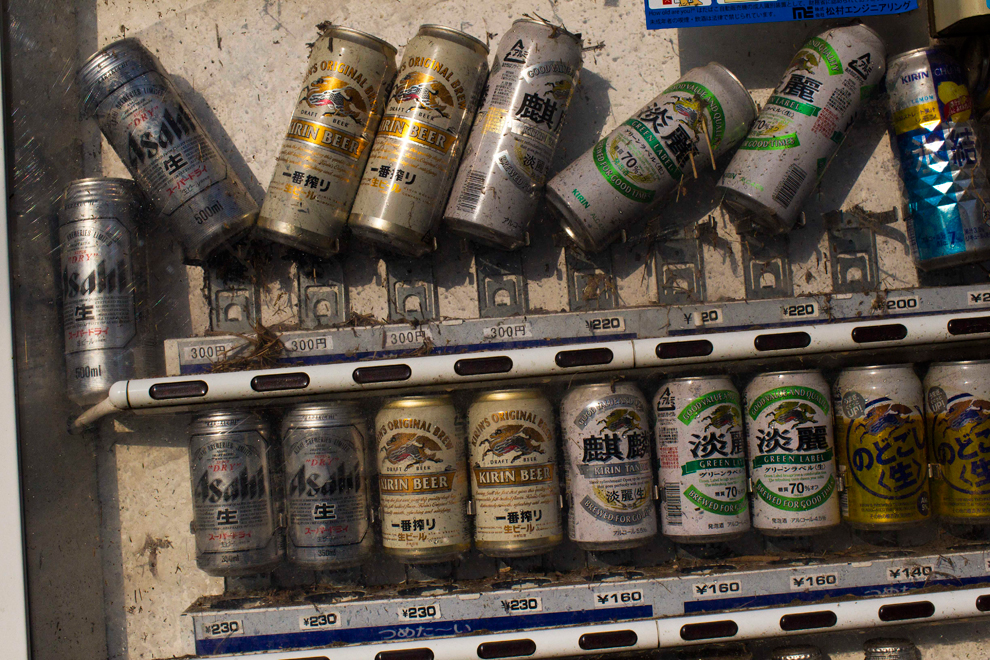







 Tα σχόλια στο site έχουν απενεργοποιηθεί. Μπορείτε να σχολιάζετε μέσα από την επίσημη σελίδα στο Facebook
Σχόλια
Tα σχόλια στο site έχουν απενεργοποιηθεί. Μπορείτε να σχολιάζετε μέσα από την επίσημη σελίδα στο Facebook
Σχόλια






